
There is nothing sexier in my book than cooking French. That could explain why I traveled 6,000 miles to take cooking lessons in France from a gifted cook and teacher Susan Herrmann Loomis. Her culinary classes became my destination.
Why French?
Georges Auguste Escoffier was the first to create systems and simplified rules for cooking. Not only did he create them, he documented them in the fascinating book Le Guide Culinaire. His criteria are still used in Western culinary education and restaurants today.
This might explain why we drink a “Frappé” at Starbuck instead of a “drink that is ice blended,” eat crêpes, instead of “very thin pancakes” and “deglaze” a pan instead of “removing the bits of food that cling to a pan, by adding a liquid.”
 Why Susan?
Why Susan?
Susan has lived in France for more than twenty years, cooking, teaching, raising a family and eating the French way. She is an award-winning author of nine books both food and literary. Her training is from the renowned cooking school, La Varenne Ecole de Cuisine in Paris. Her knowledge and appreciation for the rich traditions around food and how it is grown, harvested, and prepared is showcased in her cooking. Her recipes are fresh, functional, and sustainable, all while being very impressive and delicious. Oh, did I mention she is so much fun as well?
French Culinary Classes in Los Angeles
Whether Susan is teaching how to make roasted fish with pearls of lime, grilled baby eggplant with herbed fresh cheese, gorgeous flaky pastry filled berries, or heirloom tomato “tubes,” you’ll walk away from her classes with dozens of inspired ideas, and the skills to realize them!
Once the cooking is done, you will enjoy meals à la française. Apéritifs in the kitchen, followed by multi-course meals at the table, accompanied by local wines, a bite of cheese, a taste of dessert, and a sip of coffee. How can anyone refuse such an offer? Click here to register.
Today’s Recipe: Duck Breast with Pomegranate Reduction
Duck has always intimidated me until I met Susan. She really taught me how simple and elegant duck really is.
I learned how to cook this recipe in Susan’s home, which is a renovated 12th century restored convent in the center of Louviers, France. Her house is facing the Gothic Church of Notre-Dame de Louviers.

Her kitchen is a dream to cook in.
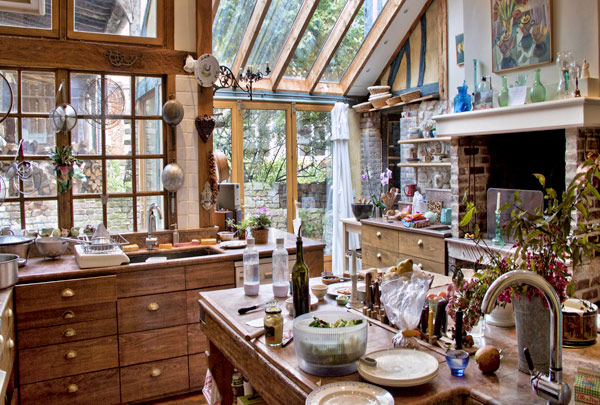
I was nervous about cooking duck. I am from a farm in Iowa and we had all sorts of animals that we raised and ate, but not duck.

Susan showed me the secret to a reduction is to quickly whisk in the butter piece by piece, working on and off the heat so that it emulsifies into the pomegranate juice without melting.

To slice a duck breast you must slice the meat on the bias into ¼-inch thick slices. Plating is the next step, which is very important as well.
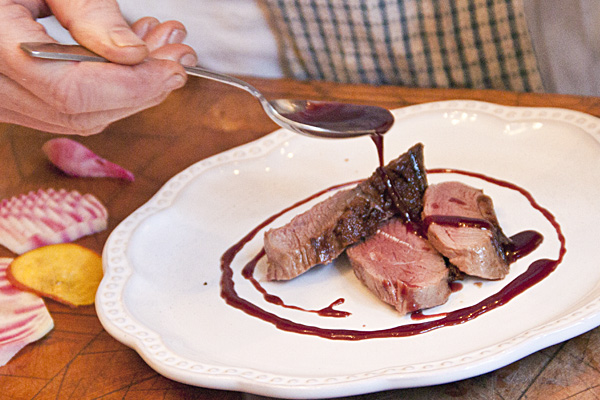
Susan showed me how to gracefully drizzle the reduction in a swirl around the plate. She served the duck with pommes frites (fried potatoes) that were cut on the mandolin.
Here is What Susan Has to Say About Duck
Magret de canard is the breast from a fattened duck, the same duck that produces silken foie gras. It is a conundrum, more meat than poultry, and it’s a favorite in France. It’s a favorite with me, too, for its elegantly tender texture, and rich depth of flavor. In fact, it’s my favorite “meat”.
Magret is a dream to cook. It has a very thick layer of fat on it, which is part of the dream. Before you seize your chest in fear, you need to understand that the fat on the magret is “good” fat – high in unsaturated fats. It’s the fat of the French paradox which, basically, refers to the low incidence of heart disease in southwest France, where the populace eats a great deal of magret (and other derivative’s of foie gras ducks and geese), regularly drinks red wine. The combination, it is thought, helps keep heart disease at bay.
Health claims are certainly interesting, but what’s more interesting about magret is that it takes 12 minutes to cook and it wows your palate.
Secrets for Success When Cooking Duck
- It should be at room temperature before being cooked.
- Use a heavy skillet, and let it get so hot that a drop of water sizzles on it.
- Use no additional fat to cook it – put the magret, fat side down, right into the dry pan.
- Follow the timing on the recipe; don’t, whatever you do, increase it.
- Slice the cooked magret on the bias into quite thin slices. Prepare for the best!
- For those who are wary of eating rare duck, I promise you it is both delicious and safe. If you’re not convinced, take a few of those scrumptious, juicy, delectable thin slices and put them in the hot fat in the pan for 30 seconds. They won’t really cook more, but they’ll look cooked, and you’ll feel better!

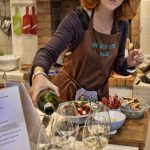
Duck Breast with Pomegranate Reduction
Ingredients
- 3/4 cup 185ml pomegranate juice
- 2 13- ounce 390g fattened duck breasts, skin scored almost to the meat with a sharp knife
- 1 tablespoon unsalted butter cut in four pieces, chilled
- Fleur de sel
- Freshly ground black pepper – optional
- Fresh herbs – optional garnish
Instructions
-
Place the pomegranate juice in a medium, heavy-bottomed pan over medium heat. Bring to a lively simmer and reduce until the juice is thickened to a syrup, and has reduced by about two-thirds, which will take about 10 minutes. Check the juice frequently to be sure it isn’t reducing too much. When the juice has reduced, remove it from the heat, and reserve.
-
Heat a heavy skillet over medium heat. When it is hot but not smoking, place the duck breast in it, skin side down. Cover and cook it until the skin is deep golden, about 8 minutes. Flip the duck breast onto the meat side, then flip it immediately back onto the skin side and continue cooking 3 to 4 minutes.
-
Remove the duck breasts from the pan, and place them on a cutting board that will catch any juices that run from them. Season the duck breasts with salt and pepper and let rest for about 5 minutes.
-
To make the sauce, reheat the reduced pomegranate juice over low heat. Quickly whisk in the butter piece by piece, working on and off the heat so that it emulsifies into the pomegranate juice without melting, and thickens it slightly. Keep the sauce warm.
-
To serve, slice the duck breasts on the bias into ¼-inch thick slices, and arrange them in a rosette pattern just off-center on 6 to 8 warm dinner plates. Drizzle the duck with the pomegranate syrup, and drizzle the syrup around the edge of the plates, as well. Garnish with herbs, and serve immediately.
Recipe Notes
Serves 6-8.
Watch a video to get a taste of Susan’s classes in Louviers, France
You can also read about Susan’s classes and her inspired recipes on my blog at
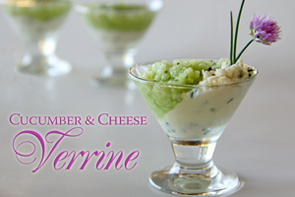

Market Cooking Class in Paris French Cooking in South Dakota
“Learn how to cook — try new recipes, learn from your mistakes, be fearless and above all have fun.” – Julia Childs
…and then, she paused for thought.
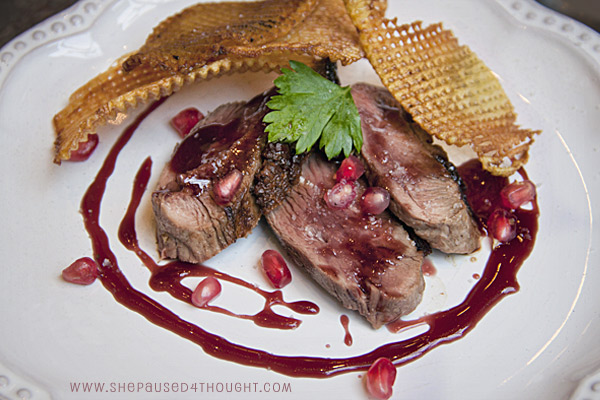
That kitchen of her’s definitely looks like it’s worth a trip to France alone!
I highly recommend to Susan’s in Louviers, France. Fun day trip from Paris.
Wow! Love that kitchen and what a very impressive dish you made and photographed!
Thanks! It tasted amazing as well. It was quick and easier than I thought it would be.
I love duck and like you, wasn’t raised on it (although the farms on Long Island went out in the 1930’s….) but love it when I eat out. I might have to brave the recipe!
Rona it is easy to make and you can also make a reduction out of oranges, port, cherries or balsamic vinegar to name a few.
I can’t wait to try this. Where do you get your duck? Is the reduction sauce sweet? Savory? What are those things in the picture that look like crackers? Wonderful presentation!!!!!!!
Wonderful posting.
Nan you can buy duck breast at Whole Foods. The reduction is sweet. The chips are potatoes cut on a mandolin. Very tricky but worth the effort.
Cathy! I cannot WAIT to get to LA, gather all those fine ingredients, and teach those classes! Thanks for this….we’ll have such a great time!
All the beauty and grace of the world are dancing together in that plate 🙂
It’s a sheer pleasure reading your posts, Kathy and I enjoy the fact that it’s not all about recipes. You always add much more oomph factor to it.
Love and hugs.
You are so kind Nusrat. I am so happy you enjoy my posts. Like yours, they are a labor of love.
I really wish I had seen this post before the end of July. Seriously.
The husband and I are talking about taking another trip to France. I’m going to look her up. I HAVE to see that kitchen for myself. In real life. Wow. Just wow. Beautiful, functional, lived in… exactly what I like in a kitchen.
And the duck. Excellent. The story. The technique. The recipe. Everything.
When you get down to Orange County, call me. There’s this new place I need to take you go! I just had their seared duck breast the other night and it was sooo delicious. And almost as pretty as your plate.
Susan was just here teaching classes. You can check out her story from LA at:http://onruetatin.com/cooking-among-the-stars/
You must look her up when you go to Paris. She is very close to Monet’s Gardens. Her kitchen is exceptional. You would love it and you would totally enjoy her style. If you want to see a video about her town and classes check out this youtube video athttp://www.youtube.com/watch?v=yov1eqggGbY
You can also read a post I did about the first class I took of hers in Paris.
http://www.shepaused4thought.com/market-cooking-class-in-paris-2/
If you are looking for restaurants in Paris check out this post
http://www.shepaused4thought.com/dining-celebrating-in-paris/
We need to make a date and I will come down to OC. I need some chicken love. 🙂
And I will never pass up an opportunity to eat duck.